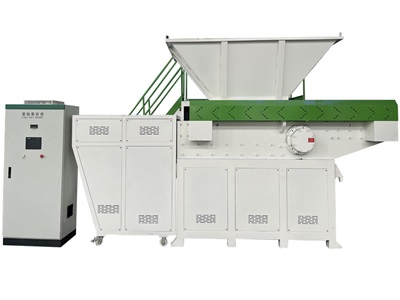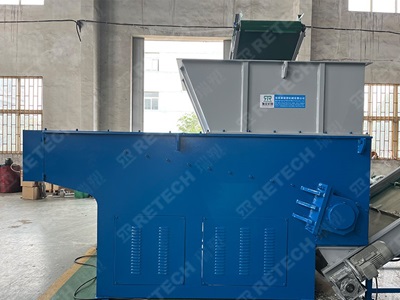Copyright © 2019-2022 Retech Machine. All rights Reserved.
In the realm of waste management and recycling, plastic shredding machines play a pivotal role in processing and repurposing plastic waste. These machines are designed to break down large plastic items into smaller, more manageable pieces, facilitating the recycling process and reducing the environmental impact of plastic pollution. In this article, we will delve into the inner workings of plastic shredding machines, exploring their mechanisms, applications, and significance in the fight against plastic pollution.

Plastic shredding machines operate on a relatively simple yet efficient principle: they use sharp blades or rotating drums to cut or tear plastic materials into smaller fragments. These machines come in various sizes and configurations, ranging from small-scale units suitable for household use to industrial-grade systems capable of handling large volumes of plastic waste.
The process begins with feeding plastic waste into the shredder, where it comes into contact with the cutting mechanism. Depending on the type of shredder, this mechanism may consist of rotating blades, counter-rotating shafts with interlocking teeth, or high-speed rotating drums equipped with sharp edges. As the plastic material is fed through the shredder, the blades or drums exert mechanical force, slicing, tearing, and pulverizing the plastic into smaller pieces.
There are several types of plastic shredding machines available on the market, each designed to meet specific needs and requirements:
Single Shaft Shredders: These shredders feature a single rotating shaft with sharp blades, making them suitable for shredding a wide range of plastic materials, including films, bottles, and containers.
Dual Shaft Shredders: Dual shaft shredders utilize two counter-rotating shafts with interlocking teeth, providing enhanced cutting efficiency and versatility. They are commonly used for shredding bulky or thick plastic items, such as automotive parts and electronic waste.
Granulators: Granulators differ from traditional shredders in that they incorporate a cutting chamber with fixed blades and rotating blades, resulting in a more uniform and controlled particle size. They are often used for granulating plastic scrap into smaller pellets or flakes for recycling or manufacturing purposes.
Horizontal Shredders: Horizontal shredders feature a horizontal orientation, with materials fed into the top of the machine and discharged from the side or bottom. They are well-suited for continuous shredding operations and can handle large volumes of plastic waste with ease.
The importance of plastic shredding machines cannot be overstated, especially in the context of global plastic pollution and waste management challenges. Here are several reasons why these machines are essential:
Facilitating Recycling: Plastic shredding machines play a crucial role in the recycling process by breaking down plastic waste into smaller pieces that can be easily processed and recycled into new products. By shredding plastic waste, these machines help divert materials from landfills and reduce the demand for virgin plastic production.
Reducing Environmental Impact: Plastic pollution poses a significant threat to the environment, endangering wildlife, contaminating ecosystems, and contributing to climate change. By shredding plastic waste and facilitating recycling, these machines help mitigate the environmental impact of plastic pollution, conserving natural resources and reducing greenhouse gas emissions.
Promoting Circular Economy: Plastic shredding machines are key enablers of the circular economy, a sustainable economic model that aims to minimize waste and maximize resource efficiency. By shredding and recycling plastic waste, these machines contribute to the closed-loop system of material reuse and resource conservation, reducing the need for new raw materials and minimizing waste generation.
Enhancing Waste Management: Effective waste management is essential for maintaining clean and healthy communities. Plastic shredding machines help streamline the waste management process by reducing the volume of plastic waste, making it easier to handle, transport, and dispose of properly. This not only improves the efficiency of waste management operations but also helps prevent littering and environmental contamination.

In conclusion, plastic shredding machines play a vital role in waste management, recycling, and environmental sustainability efforts. By understanding how these machines work and recognizing their significance, we can better appreciate their impact on mitigating plastic pollution and fostering a more sustainable future for generations to come.